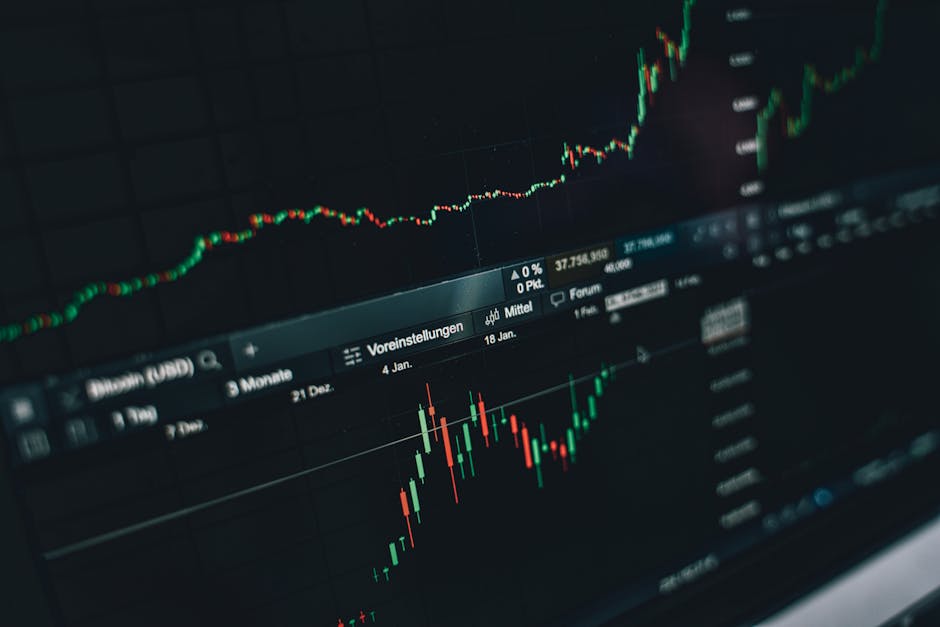Why Market Prediction Still Matters
In trading, having an edge isn’t about luck—it’s about preparation. The pros don’t just react to the market; they anticipate it. While newcomers chase price spikes or panic-dump with the crowd, experienced traders lean on data, trends, and tested strategies. That foresight—built from hours of analysis and years of pattern recognition—is what separates short-term noise from long-term gains.
Markets in 2024 are moving faster. Whether it’s crypto reacting to a tweet or global stocks swinging on central bank decisions, there’s less time to respond—and less room for error. Guesswork doesn’t cut it. Traders who understand signals ahead of the move gain more than profit; they gain control.
Accurate forecasting isn’t about being right every time. It’s about stacking probabilities in your favor. That edge shapes everything from entry timing to portfolio structure. It also lowers risk—when traders forecast well, they don’t need to over-leverage or chase wins. They stay grounded, focused, and consistent in a space designed to shake the unprepared.
Prediction isn’t optional anymore. It’s foundational.
Core Tools Traders Use
Technical Analysis
Technical analysis is where most traders start—and often, where they return when the market gets noisy. It’s the study of price action. Charts don’t lie, they just need to be read right. Patterns like head and shoulders, double bottoms, or flags are more than visuals—they signal potential momentum shifts. Volume confirms conviction. A breakout with no volume? Probably a fake-out.
Indicators aren’t magic, but the key ones still matter. RSI (Relative Strength Index) tells you whether an asset is overbought or oversold. MACD (Moving Average Convergence Divergence) shows trend direction and momentum flips. Bollinger Bands give a sense of volatility and help identify ranges. Use them to spot exhaustion, not predict miracles.
Fundamental Analysis
While technicals show the battlefield, fundamentals tell you why the fight matters. Macro-level trends—rates, inflation, regulation—move entire markets. One unexpected announcement from a central bank or change in crypto legislation and everything can swing.
Drill down, especially in crypto. Tokenomics isn’t just jargon. A coin with infinite supply and no burning mechanism? Good luck holding value. Real utility matters: what does the project do, and who cares? Who’s building it—their background counts. Teams with proven track records tend to ship what’s promised. Hype fades fast when fundamentals don’t back it up.
Sentiment Analysis
Markets are part logic, part emotion. Sentiment analysis tries to measure the latter. Words move prices—whether from a tweet or trending subreddit. Traders watching the social waves early often ride ahead of the crowd.
Tools like LunarCrush and Santiment scan social chatter, trending keywords, and community growth. They’re blunt instruments but good for spotting when excitement or fear hits critical mass. Combine that with on-chain metrics and trading volume, and you can start to feel the pulse of the market—not just see it.
The sharpest traders know that none of these tools work alone. Blend the map (technical), the terrain (fundamentals), and the mood (sentiment), and you’re working with a full toolkit—not just trading on fumes.
Emerging Techniques in Forecasting
As traditional methods evolve, cutting-edge traders are turning to new forecasting models that offer sharper insights, faster analysis, and deeper market context. Below are three emerging techniques making waves in prediction strategies.
Machine Learning Models
Machine learning is playing a growing role in market forecasting. These models use historical data to identify patterns and generate predictive outputs that can guide trading strategies.
Key Features:
- Algorithms trained on years of price data
- Capable of processing thousands of variables simultaneously
- Able to adapt and refine predictions over time
Pros:
- High-speed data processing with minimal human error
- Often surfaces non-obvious trends missed by manual analysis
Limitations:
- Requires quality data and constant retraining
- Can produce false signals if markets behave unpredictably or irrationally
- Must be guided by human oversight for real-world context
On-Chain Data Analysis
Especially valuable in crypto markets, on-chain analysis taps directly into blockchain activity to forecast behavior in real time.
What to Watch:
- Whale wallet movements: sudden large transfers can indicate price shifts
- Exchange inflows/outflows: tracking whether holders are moving assets to trade or to store
- Network metrics: such as transaction volume, active wallet count, and hash rates for proof-of-work chains
Why It Matters:
- On-chain data offers unprecedented transparency
- Reacting to on-chain signals early can give you a significant edge
Event Correlation Models
By analyzing how markets have reacted to similar events in the past, traders can anticipate price behavior around high-impact news and seasonal cycles.
Applications Include:
- Central bank announcements
- Major protocol updates or token unlocks
- Regulatory news and geopolitical changes
Technique Breakdown:
- Compare historical market behaviors before and after recurring events
- Use backtesting to evaluate which events reliably forecast movement
Caution:
- Correlation doesn’t always mean causation—context matters
- Market sentiment and timing can shift outcomes
Identifying and combining these advanced techniques with foundational strategies can help traders improve their edge in fast-moving markets.
Risk Management in a Volatile Market
Before you think about profits, protect your capital. That’s rule one. Trading in 2024—especially in crypto or fast-shifting equities—requires more than gut instinct and hopes pinned on green candles. It starts with a plan.
That plan should include rock-solid stop-loss and take-profit triggers. You need to know exactly when to cut losses and when to lock in gains. It’s not about guessing right—it’s about setting boundaries. If the trade goes south, you already know your exit. If it runs, you don’t get greedy and freeze.
Risk-reward ratios and position sizing are your quiet allies. Never risk more than you’re willing to lose. A 3:1 ratio? Solid. Bet small when uncertain, and expand as confidence builds over time. Don’t underestimate how fast markets can flip against you.
And here’s the part most ignore: emotional discipline. That’s the real battleground. FOMO, revenge trades, overconfidence after one win—these wreck more accounts than bad calls ever will. Learn how to stay calm in the middle of chaos, and you’ve already outpaced half the traders out there.
For a deeper dive into volatility strategy, check out Analyzing Market Volatility: Strategies for Traders.
Practical Takeaways for Traders
In fast-changing markets, no single method guarantees success. The key is to create a structured, agile approach by blending tools, monitoring performance, and sticking to the data—rather than hype.
Diversify Your Strategy
Relying on just one predictive technique can leave you exposed. Effective traders combine multiple forms of analysis to gain a clearer picture of market movements.
- Pair technical indicators with sentiment tools
- Use fundamental analysis to validate signals
- Cross-reference on-chain data with chart trends
Build Your Command Center
A powerful tool for modern trading is a personalized dashboard. It brings your data and insights into one centralized hub, helping you act quickly and with clarity.
- Include live charts, sentiment trackers, and key economic calendars
- Integrate real-time news feeds and event alerts
- Track holdings, stop-loss levels, and open positions visually
Prioritize Weekly Reviews
Self-analysis is an essential habit. Each week, take time to evaluate your trades—both the wins and the losses.
- Note patterns in decision-making and outcomes
- Adjust your models or tools based on performance
- Learn from mistakes instead of repeating them
Question the Gurus
In an industry full of bold claims, critical thinking is your defense. Popular influencers may have hidden incentives—your best guide remains objective data.
- Be cautious of sweeping predictions with no data
- Validate tactics with historical success, not hype
- Stick to transparent, tested methods
The most successful traders use a disciplined, data-informed approach—and refine it consistently. Keep evolving your system, and the market becomes a little less unpredictable.
Looking Ahead
Predictive AI is shaking hands with decentralized finance (DeFi) in ways that are finally useful, not just flashy. We’re seeing smart contracts that don’t just execute—they adapt. Think yield farming strategies that adjust in real time based on market sentiment, whale behavior, and historical patterns. Algorithms are now being deployed that evolve based on how decentralized protocols behave across networks. AI isn’t just reacting anymore—it’s learning, faster than most human traders can keep up with.
Meanwhile, real-time analytics is no longer a flex—it’s the baseline. Traders want dashboards that tell them what just happened, what’s happening right now, and what might happen before the next block confirms. From network congestion to gas spikes to token swap trends, it’s about zero-lag data flowing into sharper decisions.
Here’s the hard truth: markets aren’t slowing down to wait for anyone. Sticking to legacy tools or yesterday’s news means slipping behind. But those who lean in—who invest the time to understand the tech, layer data with judgment, and question everything—will keep an edge. In this space, speed helps. Clarity wins. But learning fast? That’s what puts you ahead.


 Kevin Taylorainers played a key role in building Factor Crypto Edge, contributing his expertise in market research and content development. His efforts in gathering reliable data and analyzing industry movements have helped shape the platform into a trusted source for cryptocurrency insights, ensuring readers receive clear and accurate information.
Kevin Taylorainers played a key role in building Factor Crypto Edge, contributing his expertise in market research and content development. His efforts in gathering reliable data and analyzing industry movements have helped shape the platform into a trusted source for cryptocurrency insights, ensuring readers receive clear and accurate information.